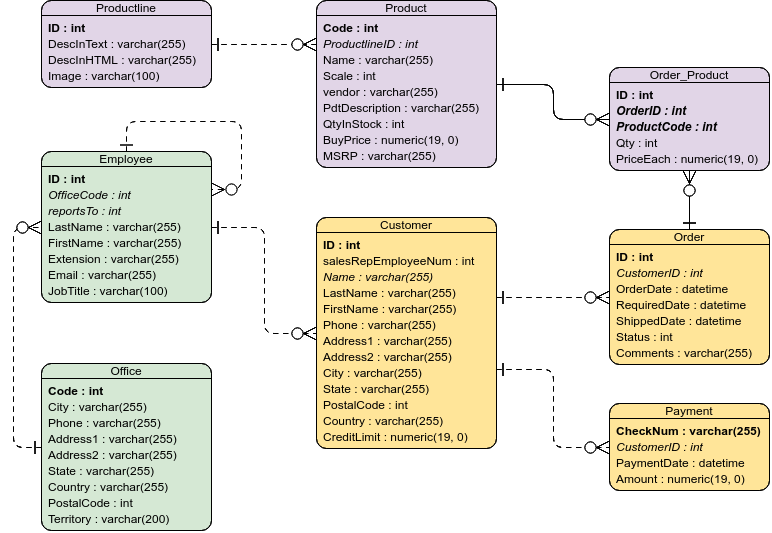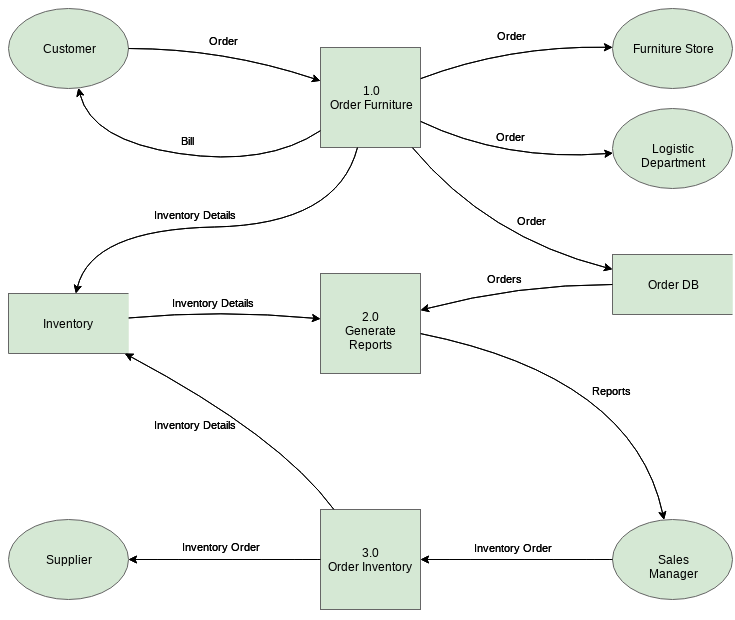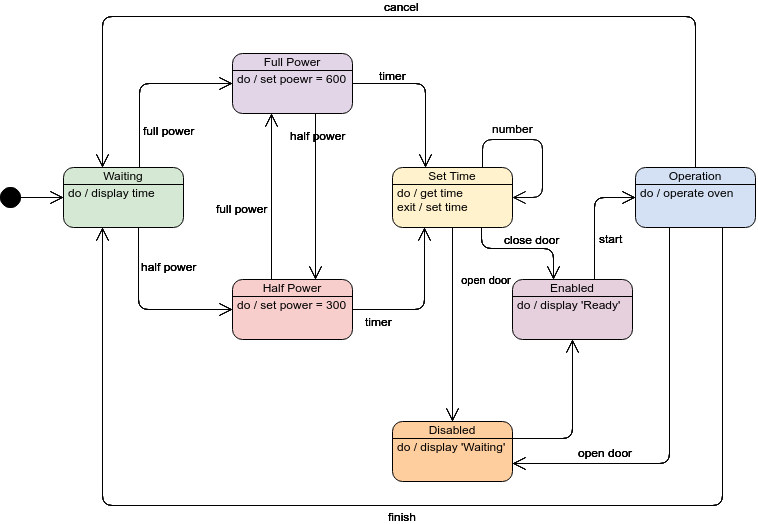سساختار یافتهسسیستمهایکتحلیل ودطراحیمتدبیر(SSADM) روشهای تحلیل و طراحی سیستمهای ساختاری، استانداردهایی که در اوایل دهه 1980 تعیین شدهاند، به طور گستردهای در طراحی و کاربرد محاسبات برنامههای دولتی بریتانیا استفاده میشود. این روش از ترکیبی از متن و نمودارها برای طراحی سیستم در طول چرخه عمر استفاده میکند، از مفهوم طراحی اولیه تا کاربرد طراحی فیزیکی واقعی.
منشأ SSADM
SSADM برای آژانس مرکزی کامپیوتر و ارتباطات، یک دفتر دولتی بریتانیا که به استفاده از فناوری در دولت مربوط میشود، از سال 1980 به بعد تولید شد.
SSADM چیست؟
سه تکنیک مهمی که در SSADM استفاده میشود به شرح زیر است:
مدلسازی دادههای منطقی
فرایند شناسایی، مدلسازی و مستندسازی نیازهای دادهای سیستم در حال طراحی. نتیجه یک مدل داده است که شامل موجودیتها (چیزهایی که یک کسبوکار نیاز به ثبت اطلاعات درباره آنها دارد)، ویژگیها (حقایق درباره موجودیتها) و روابط (پیوندهای بین موجودیتها) میباشد.

ویرایش مثال بالا به صورت آنلاین
مدلسازی جریان داده
فرایند شناسایی، مدلسازی و مستندسازی نحوه حرکت دادهها در یک سیستم اطلاعاتی. مدلسازی جریان داده به بررسی فرایندها (فعالیتهایی که دادهها را از یک شکل به شکل دیگر تبدیل میکنند)، ذخیرهسازی دادهها (مناطق نگهداری دادهها)، موجودیتهای خارجی (چیزی که دادهها را به یک سیستم ارسال میکند یا از یک سیستم داده دریافت میکند) و جریانهای داده (مسیرهایی که دادهها میتوانند از آنها عبور کنند) میپردازد.
مثال

ویرایش مثال بالا به صورت آنلاین
مدلسازی رفتار موجودیت
یک فرایند دو رشتهای: مدلسازی رفتار موجودیت، شناسایی، مدلسازی و مستندسازی رویدادهایی که بر هر موجودیت تأثیر میگذارند و توالی (یا تاریخ زندگی) که این رویدادها در آن رخ میدهند، و مدلسازی رویداد، طراحی برای هر رویداد فرایند هماهنگی تاریخهای زندگی موجودیتها.

ویرایش نمودار حالت بالا به صورت آنلاین
این سه مدل سیستم دیدگاههای متفاوتی را در مورد یک سیستم واحد ارائه میدهند. در طراحی، هر دیدگاه نیاز دارد که یک مدل سیستم کامل را تشکیل دهد. این سه فناوری به یکدیگر اشاره میکنند تا از یکپارچگی و دقت کل برنامه اطمینان حاصل کنند.
مراحل توسعه آبشاری سنتی
SSADM یک روش آبشاری برای تحلیل و طراحی سیستمهای اطلاعاتی است. میتوان SSADM را به عنوان اوج رویکرد مستند محور دقیق در طراحی سیستم در نظر گرفت و با روشهای چابک معاصر مانند DSDM یا Scrum تضاد دارد.
- مطالعه امکانسنجی — تحلیل حوزههای کسبوکار برای تعیین اینکه آیا سیستم میتواند به طور اقتصادی نیازهای کسبوکار را پشتیبانی کند.
- تحلیل نیازمندیها — تعیین نیازهایی که سیستم توسعه خواهد داد و محیط کسبوکار فعلی بر اساس فرایند بندها و ساختارهای دادهای مدلسازی میشود.
- مشخصات نیازمندیها — شناسایی نیازمندیهای عملکردی و غیرعملکردی دقیق و معرفی فناوریهای جدید برای تعریف فرایندها و ساختارهای داده مورد نیاز.
- مشخصات سیستم منطقی — گزینههای فنی سیستم شامل بهروزرسانیهای طراحی تولید و منطقی و پردازش پرس و جو و گفتگوی سیستم است.
- طراحی فیزیکی — طراحی پایگاه داده فیزیکی و مجموعهای از مشخصات برنامه. مشخصات برنامه از مشخصات سیستم منطقی و مشخصات سیستم فنی استفاده میکنند.
This post is also available in Deutsch, English, Español, Français, Bahasa Indonesia, 日本語, Polski, Portuguese, Ру́сский, Việt Nam, 简体中文 and 繁體中文.













